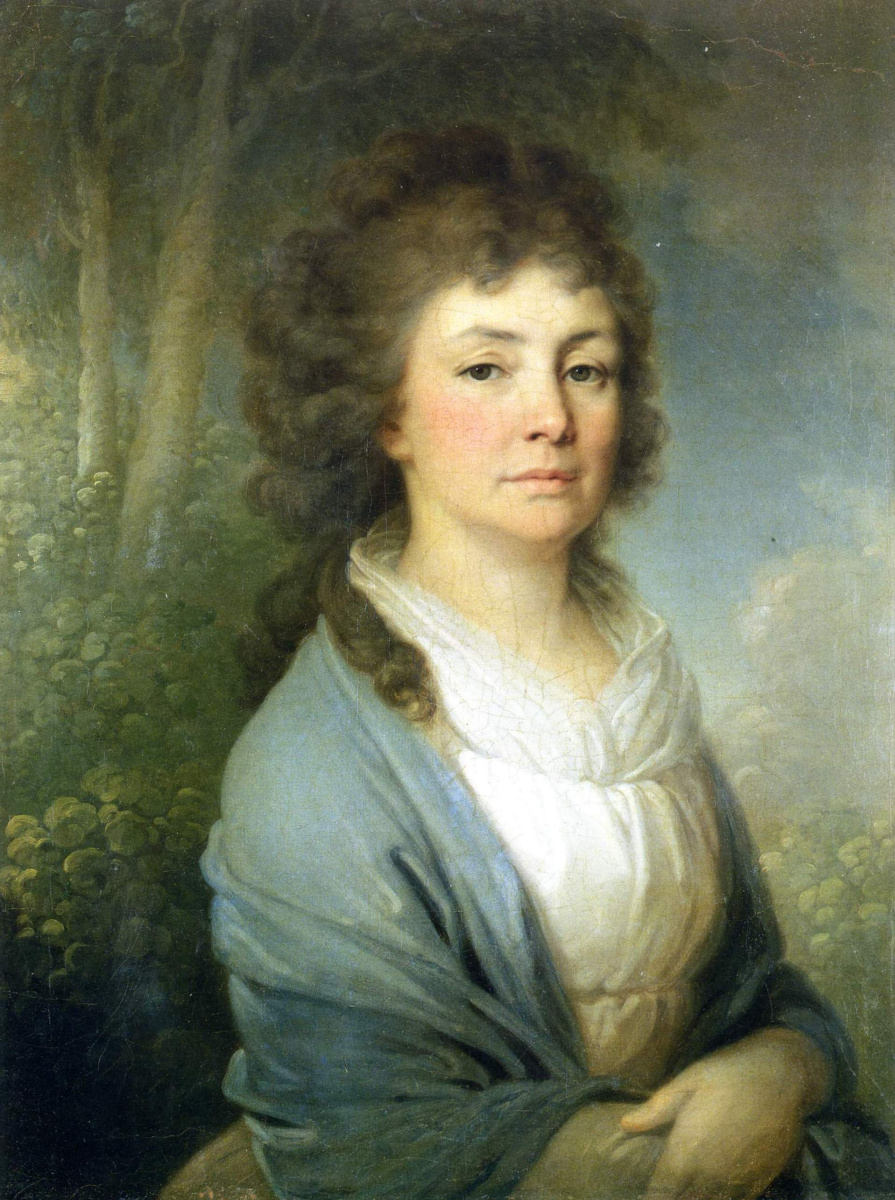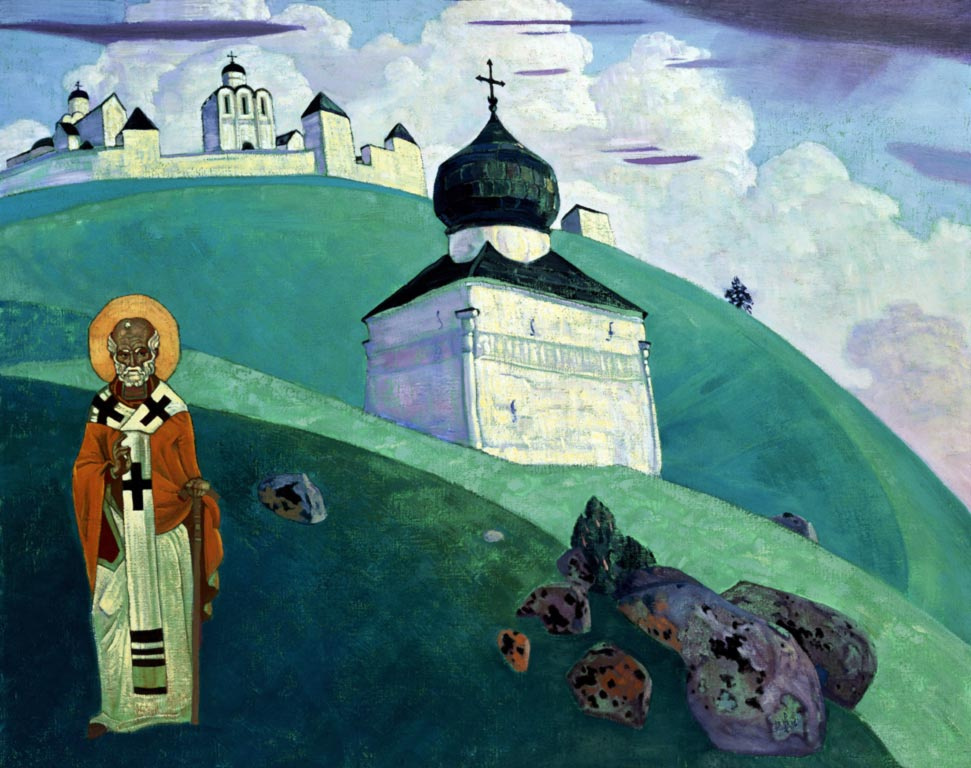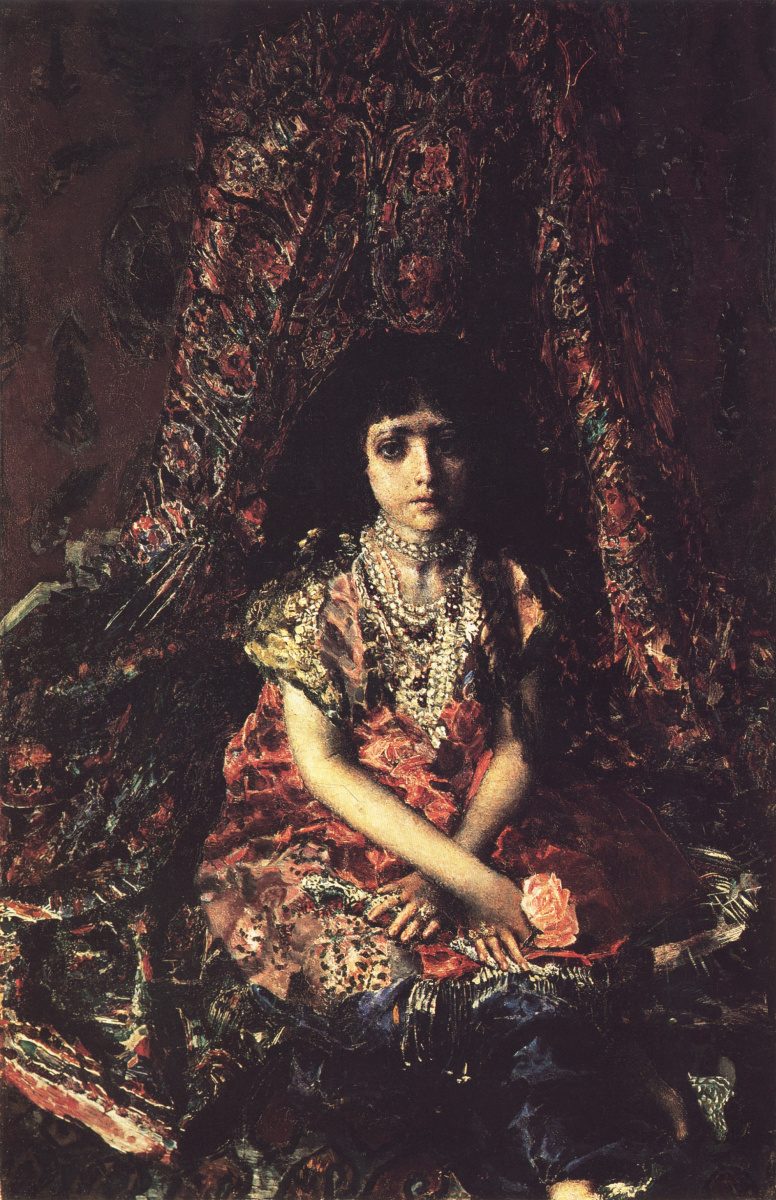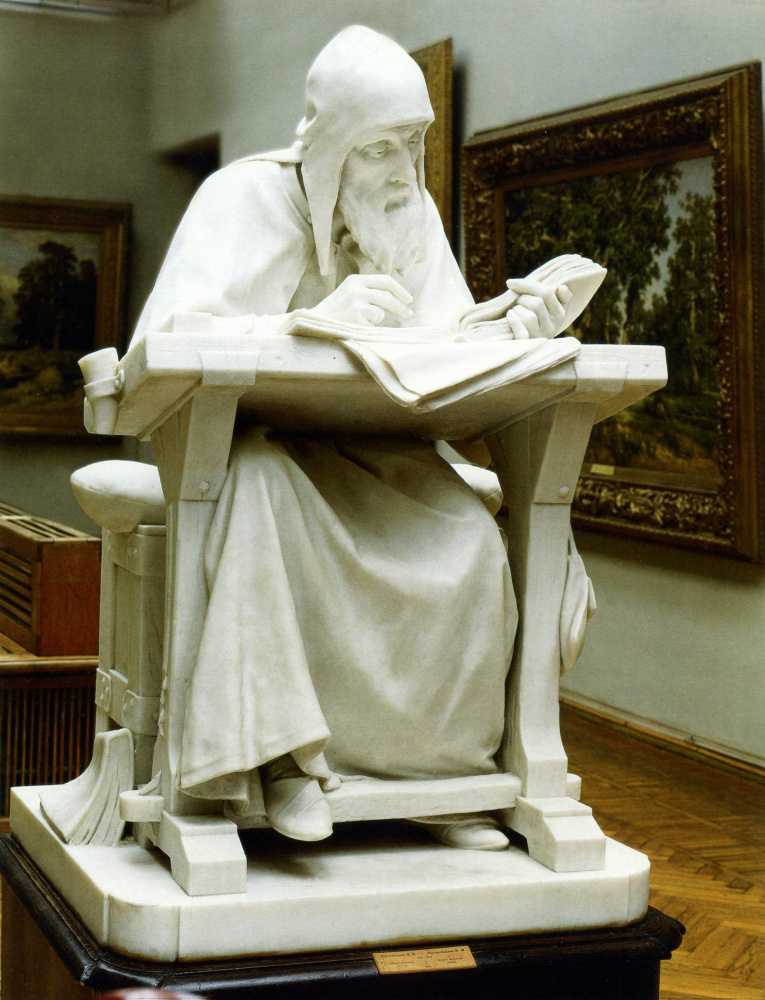The National Museum "Kyiv Art Gallery" hosts a significant collection of artworks that span from the 13th to 20th centuries. The artistic value of its collection is only second to the Russian Museum in St. Petersburg and the Tretyakov Gallery in Moscow.

The history of the museum foundation is closely connected with the Tereshchenko family, the largest industrialists and patrons of art, who owned the most valuable collection of works of art in Kyiv the late 19th and early 20th centuries. Their artworks formed the basis for the collection of the Kyiv Art Gallery, and the museum itself is located in the mansion that previously belonged to Fyodor Tereshchenko.
Fedor Tereshchenko
XX century
The museum opened in 1922. Its exposition consisted of nationalized artworks of high artistic level from private collections, including those of Nikola, Ivan and Fyodor Tereshchenko. Among them are paintings, graphics, sculptures by famous Russian artists of the second half of the 19th century: Oak Grove, Forest Stream by I. Shishkin, Peasant with a Bridle by I. Kramskoy, Student Girl by M. Yaroshenko, Portrait of V. Garshin by I. Repin, Three Princesses of the Underground Kingdom by V. Vasnetsov, The Girl Against the Background of Persian Carpet by M. Vrubel, Players by P. Fedotov, a series of works by V. Vereshchagin, as well as sculptures by M. Antokolsky and many others.
Kiev Museum of Russian art
XX century
The significance and scope of collecting activity in the Tereshchenko family is evidenced by the fact that P. Tretyakov called "gentlemen Tereshchenko" his "strong competitors" who were personally acquainted with many Russian artists, visited their studios and acquired the best works of leading painters long before their exposition. P. Tretyakov himself did the same while forming his collection, which would become the famous Tretyakov Gallery in the future. It is noteworthy that the paintings collection of F. Tereshchenko was open to the public even during the life. For this, an additional extension was made to the building and a separate entrance from the yard was built. On some days the art gallery is known to be visited by up to 1000 people!
By the beginning of the 1940s, the museum owned one of the country’s most significant art collections. Unfortunately, during the World War II, about 1500 works were taken out of Ukraine. In the post-war years, the largest museums in Moscow and Leningrad donated a number of first-class works to replenish its expositions. In 1986, another significant event took place in the museum: according to the will of the Kyiv doctor and famous collector D. L. Sigalov, about 300 paintings and graphic works by Russian artists of the late 19th — early 20th centuries were transferred to the museum. Thanks to this gift, the museum gained the opportunity to show works by K. Somov, B. Kustodiev, Z. Serebryakova, M. Saryan, P. Kuznetsov, S. Sudeikin, B. Grigoriev, N. Sapunov, N. Tarkhov and other artists.
By the beginning of the 1940s, the museum owned one of the country’s most significant art collections. Unfortunately, during the World War II, about 1500 works were taken out of Ukraine. In the post-war years, the largest museums in Moscow and Leningrad donated a number of first-class works to replenish its expositions. In 1986, another significant event took place in the museum: according to the will of the Kyiv doctor and famous collector D. L. Sigalov, about 300 paintings and graphic works by Russian artists of the late 19th — early 20th centuries were transferred to the museum. Thanks to this gift, the museum gained the opportunity to show works by K. Somov, B. Kustodiev, Z. Serebryakova, M. Saryan, P. Kuznetsov, S. Sudeikin, B. Grigoriev, N. Sapunov, N. Tarkhov and other artists.
Self-portrait with brush
1924, 80×57 cm
In 1983, a monument to Ilya Repin by the Moscow sculptor O. Komov was erected at the entrance to the museum, and that event was timed to coincide with the celebration of the 1500th anniversary of Kyiv.
The museum exposition is arranged according to the historical and chronological principle, it acquaints the viewer with the main stages in the development of Russian art in the 13th-20th centuries.
The collection of the museum contains a small, but very valuable set of works of ancient Ruthenian art of the 13—17th centuries, mainly represented by icons from Central and Southern Russia, as well as the Moscow and Novgorod schools of the 15—17th centuries. The most valuable is the Boris and Gleb icon of the 13th century, a rare example of icon painting of the pre-Mongol period. This image of young Princes, the first Ruthenian Saints, is evidence of the high level of ancient Ruthenian icon painting.
The museum exposition is arranged according to the historical and chronological principle, it acquaints the viewer with the main stages in the development of Russian art in the 13th-20th centuries.
The collection of the museum contains a small, but very valuable set of works of ancient Ruthenian art of the 13—17th centuries, mainly represented by icons from Central and Southern Russia, as well as the Moscow and Novgorod schools of the 15—17th centuries. The most valuable is the Boris and Gleb icon of the 13th century, a rare example of icon painting of the pre-Mongol period. This image of young Princes, the first Ruthenian Saints, is evidence of the high level of ancient Ruthenian icon painting.
Boris and Gleb
XIII century
In the that is hall dedicated to Russian art of the eighteenth century, the viewer can see a gallery of magnificent portraits by famous artists. The portrait genre brought the highest achievements of Russian art of the 18th century, which is also called the age of portrait. Here are the paintings by I. P. Argunov, A. P. Antropov, P. Rotary and the works by the most prominent representatives of the portrait genre, D. Levitzky and V. Borovikovsky. One of the most remarkable works of V. Borovikovsky in the museum is the Portrait of V. Arsenyeva. The artist created an attractive poetic image that is full of female charm.
Portrait of Arsenyeva
1795, 68×54 cm
The section of art of the first half of the 19th century is not numerous, but the works by famous artists give an idea of the main stages of this period in Russian art. Here you can admire the seascapes by the famous marine
painter I. Aivazovsky, portraits by the outstanding representative of the academic genre K. Bryullov. Romanticism
is represented by the works of V. Tropinin, the Portrait of a Ukrainian Peasant, and O. Kiprensky, Portrait of the Countess Pototskaya, her Sister Shuvalova with Ethiopian Girl. There is also an interesting sketch
of the Trembling head to the work by A. Ivanov, The Appearance of Christ Before the People, the only work by A. Ivanov in Ukrainian museums.
The most complete section of the museum is dedicated to the second half of the 19th century, especially the art of the Wanderers. The Members of the Association of Travelling Art Exhibitions suggested advanced ideas, and in their works they sought to reveal burning topics, expose social injustice, and capture everyday life. Significant works of this period are M. Ge’s Self-Portrait; V. Perov’s Blessed One; I. Kramskoy’s, Peasant with a Bridle. Mina Moiseev; A. Savrasov’s Early Spring; V. Makovsky’s Fair in Poltava; M. Yaroshenko’s Student Girl; I. Repin’s St Nicholas of Myra Saves Three Innocents from Death; and V. Polenov’s In a boat. Abramtsevo.
The students
1883, 131×81 cm
One of the significant monographic collections of the museum is the collection of artworks by the battle-painter, V. V. Vereshchagin. The museum hosts a series of paintings and graphic works dedicated to the events of the Russian-Turkish war of 1877—1878, as well as sketches created by the artist during his travel to India. One of the most significant paintings in the museum’s collection is the Winners painting.
The section of art of the late 19th — early 20th century is represented by a variety of new art movements that have appeared in art. The museum exposition acquaints with the artist who were the members of the Mir Iskusstva, Blue Rose creative associations, as well as with bright creative individuals (M. Nesterov, On the Mountains; V. Borisov-Musatov, Lady in Purple; M. Saryan, Flowers of Armenia; R. Falk, Still Life with Bread and Jug; P. Konchalovsky, Mushrooms; M. Saryan, Greenery Seller; N. Roerich, Saint Nicholas; K. Korovin, Roses on the Terrace. Crimea; A. Arkhipov, Peasant Woman in a Yellow Scarf).
The section of art of the late 19th — early 20th century is represented by a variety of new art movements that have appeared in art. The museum exposition acquaints with the artist who were the members of the Mir Iskusstva, Blue Rose creative associations, as well as with bright creative individuals (M. Nesterov, On the Mountains; V. Borisov-Musatov, Lady in Purple; M. Saryan, Flowers of Armenia; R. Falk, Still Life with Bread and Jug; P. Konchalovsky, Mushrooms; M. Saryan, Greenery Seller; N. Roerich, Saint Nicholas; K. Korovin, Roses on the Terrace. Crimea; A. Arkhipov, Peasant Woman in a Yellow Scarf).
St. Nicholas
1916, 71.5×88.5 cm
The museum has an excellent collection of works by M. A. Vrubel, which is unique in the completeness of the artist’s early Kyiv period works collected in it. One of the artist’s best works of this period is The Girl Against the Background of Persian Carpet. Watercolour
sketches for the paintings of the St. Volodymyr Cathedral, among which there are four versions of the Tombstone Crying, are evidence of the painter’s high skill and deep understanding of ancient Ruthenian and Byzantine art.
Girl against a Persian carpet
1886, 104.5×68.4 cm
The art of the 20th century (1917—1980), which developed under influence of Soviet realism
, is represented by the works of B. Yoganson, F. Bogorodsky, K. Bogaevsky, A. Plastov, A. Tyshler, Y. Pimenov and others. The most interesting is a series of works by the great Soviet graphic artist and sculptor A. Deineka. In his works, A. Deineka glorified the peaceful Soviet reality, portrayed the life of a modern city dweller, paid special attention to physical culture: Runner, Student Girl, sculptures A Boy Jumping into the Water, Boxer.
The museum holds a remarkable collection of Russian sculpture, the most interesting works include Portrait of A. Suvorov by V. Demut-Malinovsky, Boy Begging Alms by N. Pimenov, Horse by P. K. Klodt, Bogatyr, The Cossack’s Farewell by E. Lanceray, Nestor the Chronicler by M. M. Antokolsky.
The museum holds a remarkable collection of Russian sculpture, the most interesting works include Portrait of A. Suvorov by V. Demut-Malinovsky, Boy Begging Alms by N. Pimenov, Horse by P. K. Klodt, Bogatyr, The Cossack’s Farewell by E. Lanceray, Nestor the Chronicler by M. M. Antokolsky.
Today the National Museum "Kyiv Art Gallery" contains over 12,000 exhibits. The areas of the museum exhibition halls do not allow to include all the artistic values of the museum in its permanent exhibition, therefore the exhibition is constantly updated with works from the Museum funds. Every visit to the museum will be unforgettable and give the viewer new impressions and discoveries.






























